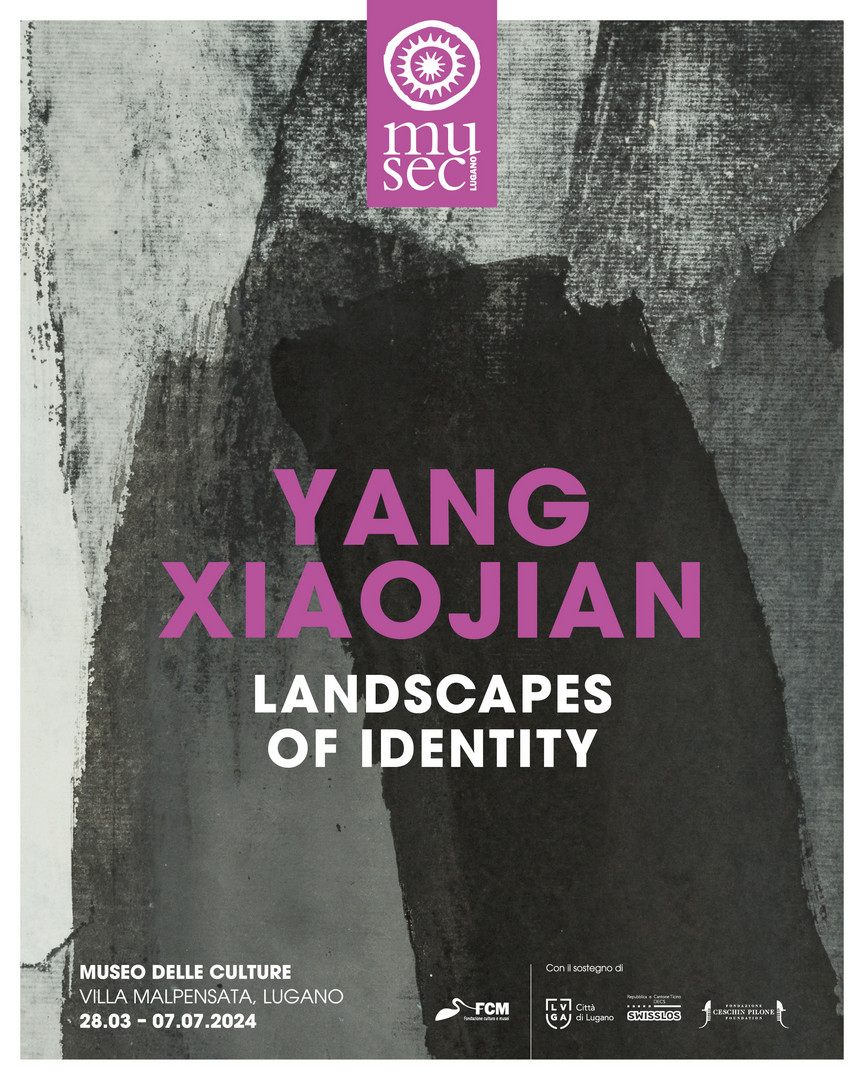Museo delle Culture uses cookies to improve the user experience. If you need more information click on the privacy page. Privacy policy X
28 March 2024 - 07 July 2024, Villa Malpensata, Spazio Cielo
The new project in MUSEC's "Global Aesthetics" cycle features the Chinese artist Yang Xiaojian, who, confronting both the ancient tradition of calligraphy and the influences of Western abstractionism, has succeeded in constructing a personal language in which tradition and modernity intertwine and mirror each other. Curated by Giancarlo Ermotti and Massimiliano Vitali (MUSEC), the exhibition Landscapes of Identity presents 156 works on rice paper painted in ink and water, sometimes with the addition of acrylic paints, all created between 2004 and 2021. The selection shows the results of the itinerary that led the artist, born in 1960, to abandon the art of traditional calligraphy in favour of abstraction: from the painted word that condenses thought to the possibility of restoring, via abstract painting, a broader, more open and inclusive relationship with the universe. For Yang Xiaojian, everything begins with contemplation: a cloud slowly enveloping and concealing the outline of a mountain, a chair or other object, a particular event in society as in personal life, anything can be a source of inspiration. The black ink, acrylic and water marks on the rice paper sheets are the visible trace of the artist's emotions and thoughts. Similar to real landscapes that reveal themselves to the eyes, the works on display thus also invite the observer to allow himself time and the silence of contemplation.
Accompanying the exhibition is an English-language catalogue edited by Massimiliano Vitali, Yang Xiaojian. Landscapes of Identity. Fondazione culture e musei Editions, Lugano 2024, 168 pages, 201 colour images. ISBN 979-12-80443-09-0. CHF/€ 60.
Global Aesthetics
The exhibition is the fifth appointment of "Global Aesthetics", a cycle that explores the forms and languages of contemporary creativity, with the ambition of bringing the deep reasons and context of the processes of artistic creation back to the centre of attention, while at the same time placing the visitor in the ideal conditions to live an aesthetic experience rich in nuances.

Yang Xiaojian was born in 1960 in Taiyuan, capital of the northern province of Shanxi. As early as primary schools, his natural inclination for calligraphy became apparent, which he continued to practise, even during his years of military service, between 1976 and 1981. He then deepened his study of the great calligraphers of the past and in 1985 took part in a calligraphy competition where he won first prize, to be followed by numerous other awards. In the 1980s, he began to sell his calligraphies and the good response led him to devote himself more and more assiduously to artistic activity. In 1992, he was invited to Japan to exhibit in various cities, including Kobe, Osaka and Tokyo, where he held writing performances and lectures. Thanks to frequenting other important Chinese calligraphers and artists, he began to develop his own artistic thinking and to progress technically and stylistically. His works were included in important art exhibitions in China and received national and international awards. After the death of his father in 1998, Yang Xiiojian started to travel: Hong Kong, Macao, Thailand, Korea. During his travels, the artist gathers new ideas and inspiration for his paintings. In 1999, he moved to Shanghai with his wife and two daughters.He reads a lot and becomes interested in the greats of modern Western painting, including:Motherwell, Dubuffet, Soulages, de Kooning, Rotko.He began to develop the style of painting that would later make him famous and in the early 2000s his work became increasingly abstract.His style of sharp contrasts (hard hedge) began to attract the interest of American and European collectors.He participated in numerous group exhibitions of calligraphy and contemporary art in Beijing, Seoul, Hong Kong, Macao and Shanghai. In 2007, the Kyoto City Museum organised a solo exhibition for him and Japan hosted several of his exhibitions.In Europe, he has exhibited mainly in France and Germany; the exhibition at MUSEC is his second solo show in Switzerland, following the one organised in 2013 in Massagno (Casa Pasquee).
The artist in his studio